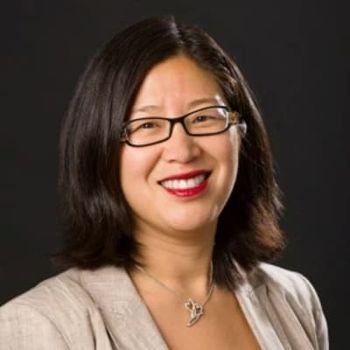
Oncology NEWS International
- Oncology NEWS International Vol 11 No 10
- Volume 11
- Issue 10
Radioactive Glass Microspheres Effective for HCC Patients
ORLANDO-Treatment of unre-sectable hepatocellular carcinoma (HCC) with 90-yttrium-embedded glass micro-spheres (TheraSphere, MDS Nordion) appears to be safe, effective, and less toxic than the alternative, transarterial che-moembolization (TACE).
ORLANDOTreatment of unre-sectable hepatocellular carcinoma (HCC) with 90-yttrium-embedded glass micro-spheres (TheraSphere, MDS Nordion) appears to be safe, effective, and less toxic than the alternative, transarterial che-moembolization (TACE).
The treatment delivers insoluble glass microspheres (22,000 to 73,000/mg) through a catheter to the hepatic artery via the femoral artery. Because of their small size (20 to 30 microns), they become trapped in the hepatic capillaries and exert a local radiotherapeutic effect, said Riad Salem, MD, William Beaumont Hospital, Royal Oaks, Michigan.
The first- and second-line options for unresectable HCC patients are few, Dr. Salem said at a poster session of the 38th Annual Meeting of the American Society of Clinical Oncology (abstract 553). Most are cirrhosis patients, with few qualifying for liver transplantation.
Dr. Salem presented data on a series of 36 patients selected for a planned maximum of two treatments per liver lobe under a compassionate use protocol. Pretreatment MAA (macroaggregated albumin) scans and hepatic artery angiograms were performed to rule out excessive shunting to lungs or aberrant vasculature to the intestine or stomach.
Among the 36 patients, 26 were male, with an age range between 29 and 86 years. Cirrhosis was present in 25 and hepatitis C antibody in 16. Tumors were unilobar in 27 (1.4 to 16 cm).
Hepatic lobes were treated sequentially, not less than 60 days apart. Each Thera-Sphere treatment was designed to deliver 125 to 150 Gy/kg to the liver. The beta radiation penetrates 2.5 to 3 mm, and has a half-life of 64.2 hours. "Most of the activity has dissipated after about 12 days," Dr. Salem noted.
Treatment was typically administered on an outpatient basis. Earlier experience had shown that trying to treat both lobes at once through the hepatic artery could lead to gastritis because of spherules traveling to the small bowel or stomach through small arteries. "We show that toxicities are much less when treatment is localized to the parenchyma, two treatments rather than one," Dr. Salem said.
Study Results
Dr. Salem reported that the median dose delivered was 134 Gy; 31 patients were evaluable for efficacy. Partial responses were seen in 6 patients (19%) and stable disease in 18 (58%), with progression in 7 (23%). Median time to progression (in 26 patients) was 46 weeks, with one patient stable at more than 600 days. There were 12 deaths, none attributed to treatment toxicity.
Bilirubin increases of more than twice baseline were transient in 10 patients and persistent in 6. Reductions to less than 50% of baseline in platelets and white blood cells occurred in 5 and 4 patients, respectively. Fatigue occurred in 16 patients, nausea in 10, and vomiting in 5.
Dr. Salem underscored that there is no hair loss with TheraSphere, and that patients generally feel fine for about 2 days after treatment; fatigue, often severe, then sets in for about 10 to 14 days, with flu-like symptoms in some.
Dr. Salem and his co-investigators concluded: "Disease stability, quality of life, and apparent survival appear remarkable for such a safe product. . . . Thera-Sphere represents an efficacious and safe treatment alternative for patients with unresectable HCC, who would otherwise have limited options available."
Dr. Salem commented that the Thera-Sphere technology has potential benefit for any tumor with a blood supply that allows introduction of a small catheter. "You can get in very, very high doses of focal radiation," he said.
TheraSphere has also shown promising results in patients with colorectal cancer liver metastases in studies conducted by David Van Echo, MD, and colleagues at the University of Maryland. At the American Association for Cancer Research 2002 annual meeting, they reported 1-year survival of 50% in 43 such patients treated with TheraSphere.
Articles in this issue
about 23 years ago
FDG-PET Predicts Prognosis in Primary Osteosarcomaabout 23 years ago
Vaccine Turns Immune System Against Cancer Cellsabout 23 years ago
Three Themes to Guide von Eschenbach at NCIabout 23 years ago
Arimidex Approved for Early-Stage Breast Cancer in Postmenopausal Ptsabout 23 years ago
Long-Term Exposure to Diesel Exhaust Poses Lung Cancer Riskabout 23 years ago
Most Americans Unaware of Excessive Weight as a Risk for Some Cancersabout 23 years ago
Three Themes to Guide von Eschenbach as NCI Directorabout 23 years ago
Gleevec Gets FDA Priority Review for First-Line Use in Early CMLabout 23 years ago
New Anti-HIV Agent Prevents Virus From Entering Cellabout 23 years ago
Docetaxel/Gemcitabine Effective in Advanced NSCLCNewsletter
Stay up to date on recent advances in the multidisciplinary approach to cancer.


















































































